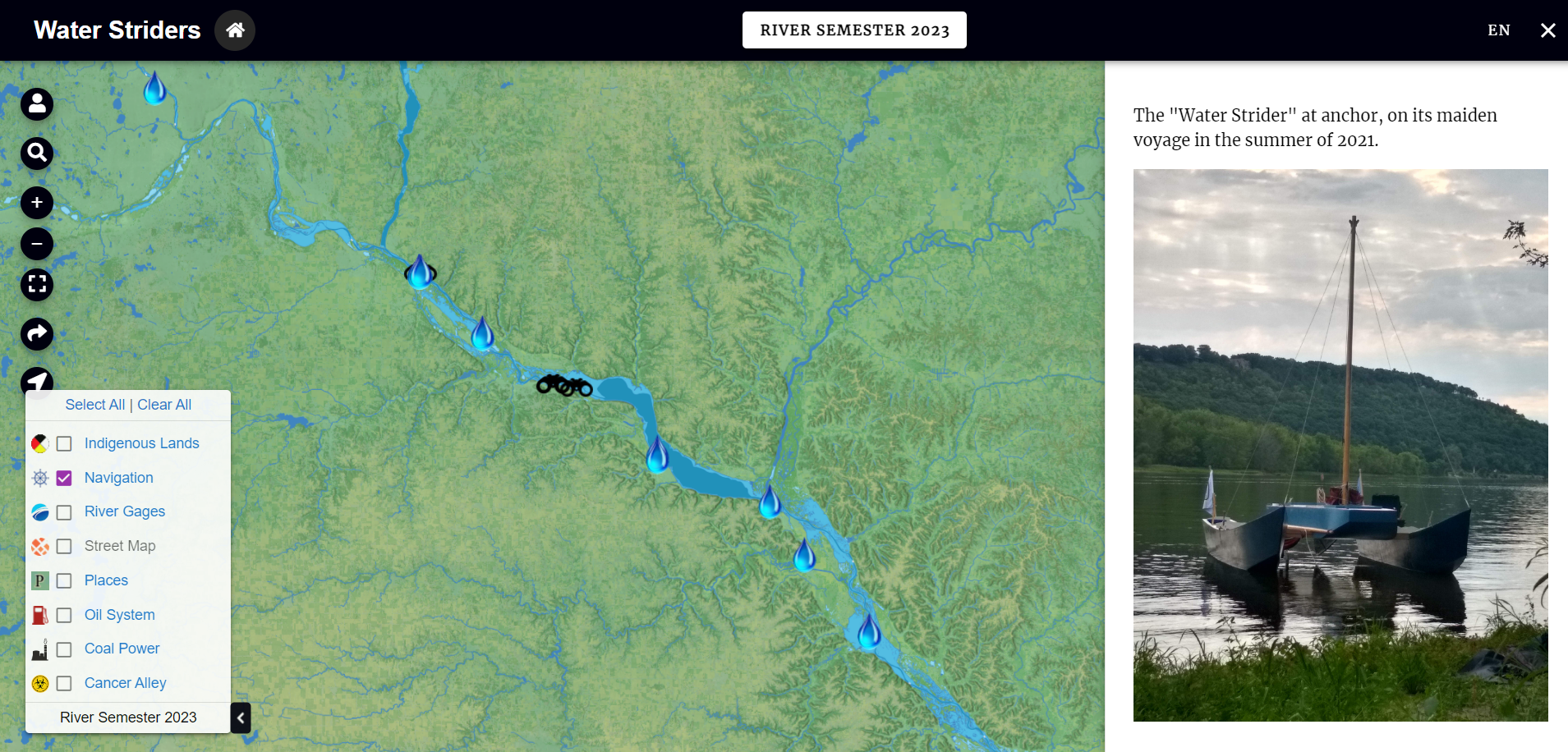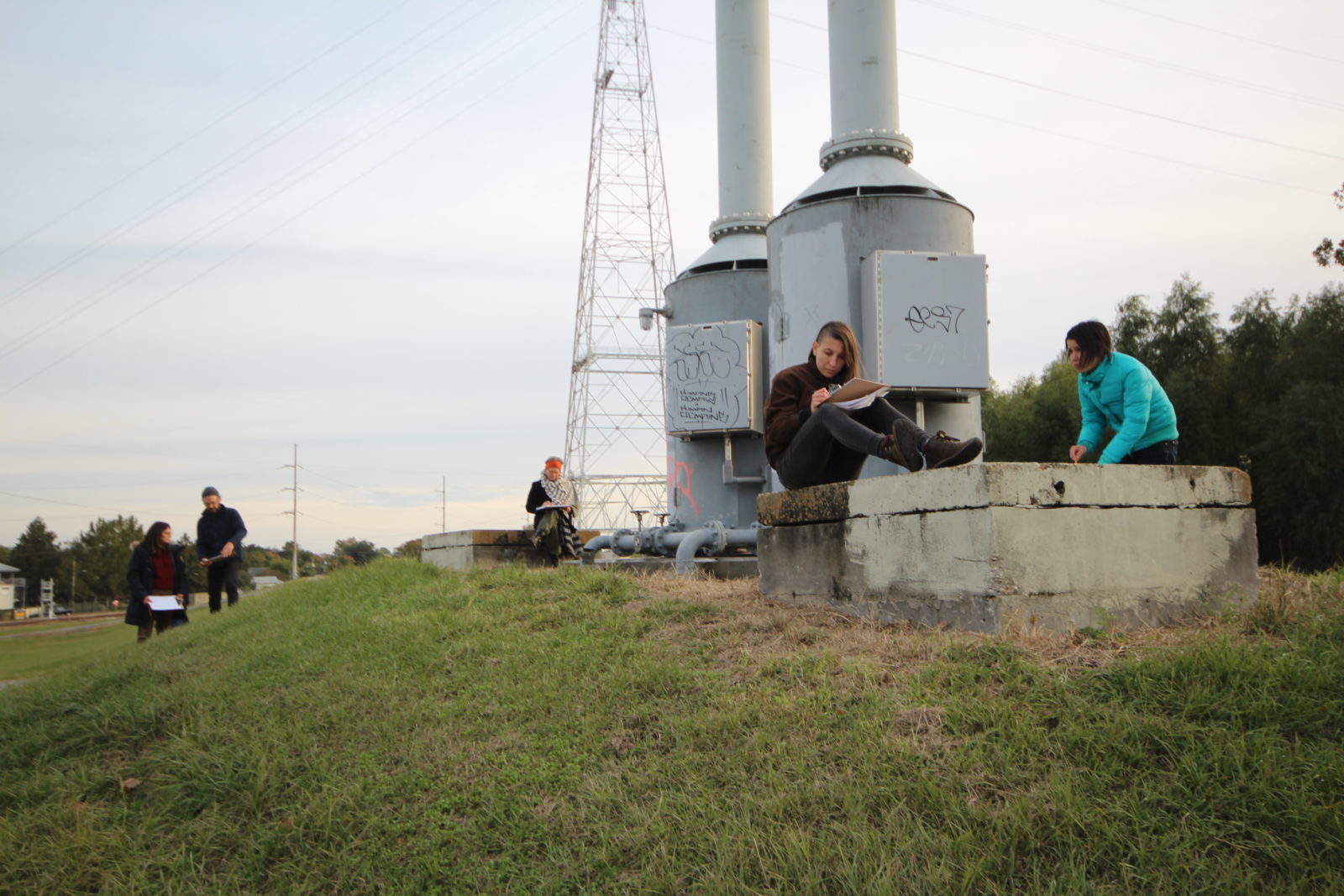In this blog post, author Nelson Mondale reflects on their experience on a tour led by Indigenous guides through the convergence of the Minnesota and Mississippi rivers, the multi-dimensional cultural landmark of bdote. Through the guidance of Ramona Kitto Stately and Ethan Neerdaels, the author learns about the cultural and historical significance of the space in Indigenous heritage and Dakota culture. For the author, the tour led to a deeper understanding of the importance of education and sharing Indigenous knowledge and histories. To conclude the author reflects on how this education has been paramount in the education they would go on to pursue about the vast histories of the river.

A class I took last fall, taught by Tia Simone-Gardner entitled “The River, the Gulf, and the Ocean” delved into a deep cultural study of the Mississippi River both in the Twin Cities area and the broader United States. At the beginning of the semester, we were asked by Tia to tell an audio story about a site on the river, with recordings we had taken ourselves at the river bank near Macalester. For one of these recordings, I sat on a white bluff that overlooked the river, on a day where the sun filled my skin and allowed my brain to settle. My microphone picked up cicadas groaning and branches swaying in the wind. As I sat on that white rock, I was reminded of the way the river teaches me. I imagine a 1’x1’ square placed on the surface of the rushing jewel water. The moment I am able to construct an observation about the water within my imaginary square, the water in question has already displaced itself, already filling another space along the river's twists and turns; the insect song is suddenly shifted key and the breeze that drives the movement of the trees has picked up. I realize that in the river, my definitions become invalid, as a metamorphic story of displacement is impossible to name. Through my time at Macalester, the river has been a teacher of vast proportions to me in this way, as it has offered, among many things, grounding, home, therapy, and community.
As a part of this course, I was asked to attend the Learning from Place Bdote Tour, led by Ramona Kitto Stately and Ethan Neerdaels. The road that took us towards the bdote wound through wetlands and sparse trees that filtered white sunlight into a golden glow that illuminated the fall foliage. Our tour guides walked us through a path that led to the convergence of the Minnesota and Mississippi rivers, the bdote; a space known as the center of the universe, and the birthplace of Dakota in Dakota culture; a space of creation, fertility, abundance, and home. We were given headphones and a radio receiver that allowed us to hear Ramona and Ethan while walking around the area and observing. I found a tangle of tree roots right on the bank of the river overlooking Wita Tanka. As she began her talk, Ramona taught us about the importance of this space in her heritage and in her culture, and what it means to her to be where we were.
Ramona led us through the history of white invasion and genocide that had taken place where we sat and within broader Minnesota. She stressed the importance of education, and what it means to share Indigenous knowledge and histories, describing how much of Indigenous history in the U.S is taught in a way that removes the social, geographical, and temporal sovereignty of Indigenous communities. In stark contrast, the teaching I received on Tuesday offered a unique sense of here-ness and present-ness that put the histories of Minnesota in a place that was impossible to misinterpret, and unlike any indigenous educational opportunities I had received in the past. Where we were sitting was a space of unbelievable joy, beauty, pain, welcoming, and suffering that was occuring right then and there.
As I was coming to understand, the Mississippi and Minnesota rivers offer a vast history that will be forever fully unknowable to me, but in that time on the tour, we were given the opportunity to be with our lack of knowledge and rely rather on what Ethan would later describe as the knowledge of ghost. The knowledge of ghost speaks to our sixth sense of energy and emotion, and an ability to learn. Ethan asked that we attempt to understand the space around us not only through conventional tools of understanding, but through an empathetic approach to space that put one’s self in the center of observation, avoiding an idea of objectivity in our observation. This concept did not come easy to me, as I am tied to a colonial understanding of space through my ancestry and actions that has shaped how I create and cultivate places. This understanding contradicts my knowledge of ghost. Ramona described how colonial society places a weakness on the lack of knowledge—whereas in Dakota culture, as Ramona tells us, this is one’s power in life. In this way, I found I was able to sit in my discomfort and learn.

This conflict of observational processes and ways of thinking have led to centuries of invalidation of Indigenous science, which, as mentioned many times by Ethan, has proved again and again to offer observations that put one in harmony and understanding of our world, as well as in our cosmology.
At the end of our tour, Ethan asked us to ask ourselves:
Who am I?
Where am I from?
Who are my people?
What is my dream?
On my bus ride home, I thought about these questions. I imagine myself sitting in a sun-dappled, warm river of those things—my name, where I am from, my people, etc., a river of self. As well as that, I imagine myself sitting in a cool river of knowledge, on a seat of smooth stones. In the passing water was the knowledge that had been given to me by those teachers. Sitting in both rivers at once, at a convergence, I am able to recognize not only the importance of my own agency in the listening and telling, but of the teachers that both listened and told, a space that contained vast and equal importance in every facet of a story, a confluence that was both teacher and student, both warm and cool.
I have been afforded a landmark opportunity to confront my being in the space I reside upon. I am eternally grateful for these teachers: Tia, Ramona, Ethan, the River as catalysts for understanding my story as a story of displacement, me and the river are one in the same. I am not bound to my process of understanding, and the river is one of countless teachers that guide in the ever laborious process of change. I have an immeasurable amount of colonial infrastructure that defines my existence in the space I am in and the way I act that must change.

